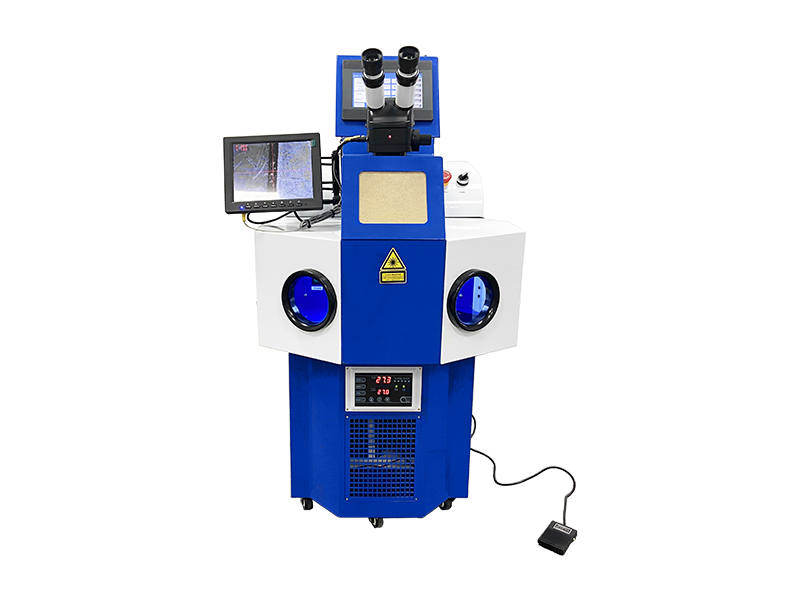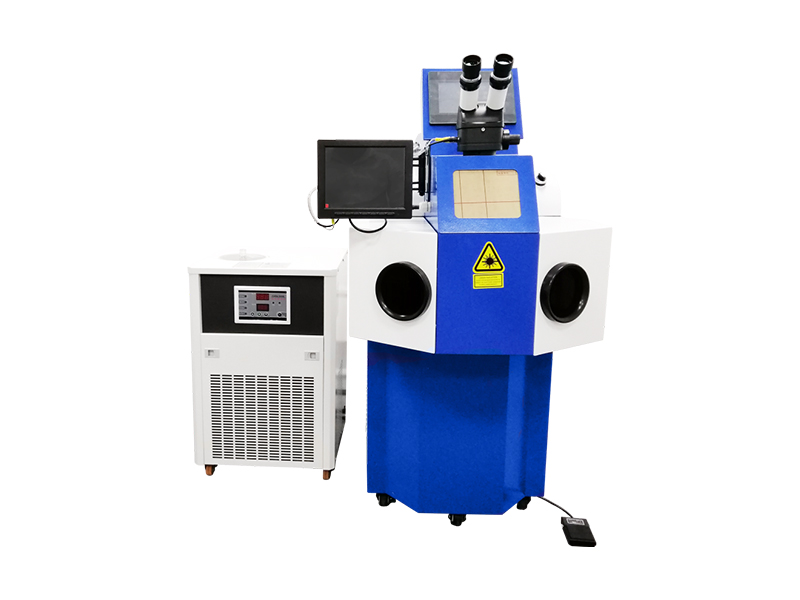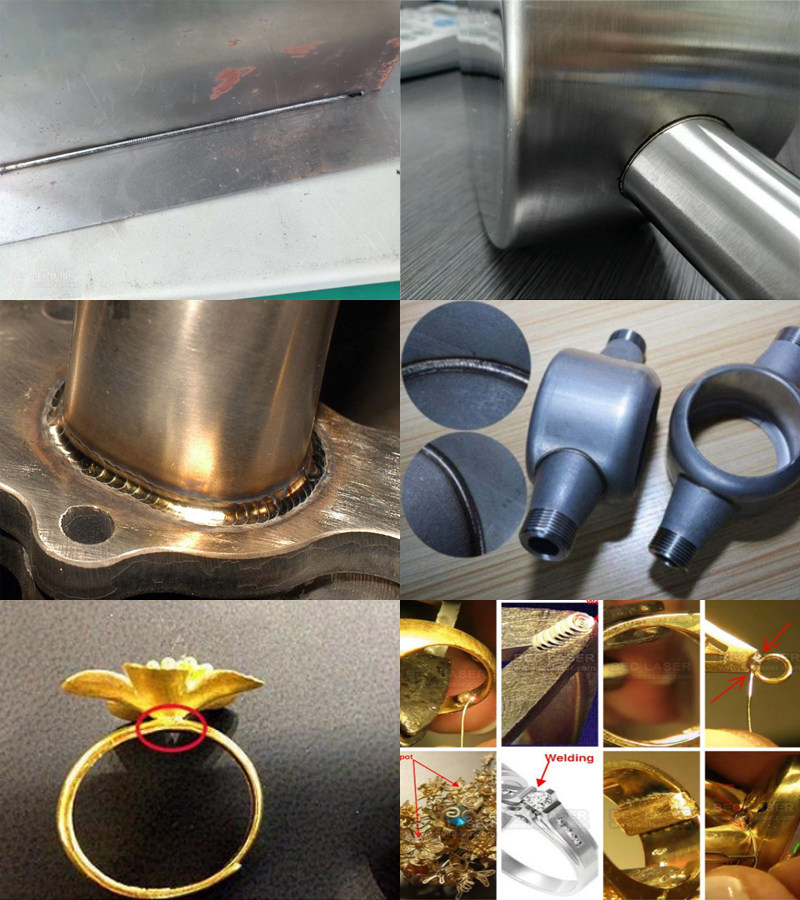At present, laser welding machines have been widely used in advertising decoration, jewelry, doors and windows and other industries. What is the difference between laser welding and argon arc welding, soldering and other traditional welding technologies? What does the laser welding machine rely on to gradually become the mainstream of the current welding technology?
Laser welding machine is a new type of welding method, mainly for the welding of thin-walled materials and fine parts, which can complete spot welding, butt welding, stitch welding, sealing welding, etc. Small size, small deformation, fast welding speed, flat and beautiful welding seam, no need or only simple treatment after welding, high welding seam quality, no pores, accurate control, small light spot, high positioning accuracy, easy to complete automation. It uses high-energy laser pulses to partially heat the material in a small area. The energy of the laser radiation diffuses into the material through heat conduction, melts the material to form a specific molten pool, and then dissolves the two materials in contact together.
How laser welding works
Laser welding is to irradiate a high-intensity laser beam to the metal surface, and through the interaction between the laser and the metal, the metal is melted to form a weld. Metal melting is only one of the physical phenomena during the interaction of the laser with the metal. Sometimes light energy is not mainly converted into metal melting, but manifested in other forms, such as vaporization, plasma formation, etc. However, to achieve good fusion welding, metal melting must be the dominant form of energy conversion. To this end, it is necessary to understand various physical phenomena generated in the interaction between laser and metal and the relationship between these physical phenomena and laser parameters, so that most of the laser energy can be controlled by controlling the laser parameters.
It is converted into the energy of metal melting to achieve the purpose of welding.
Process parameters of laser welding
1.Power density
Power density is one of the most critical parameters in laser processing. With higher power densities, the surface layer can be heated to the boiling point in the microsecond time range, resulting in a large amount of vaporization. Therefore, high power density is beneficial for material removal processes such as punching, cutting, and engraving. For lower power density, it takes several milliseconds for the surface temperature to reach the boiling point. Before the surface vaporizes, the bottom layer reaches the melting point, which is easy to form a good fusion weld. Therefore, in conduction laser welding, the power density is in the range of 104~106W/cm2.
2.Laser pulse waveform
Laser pulse shape is an important issue in laser welding, especially for thin sheet welding. When the high-intensity laser beam hits the surface of the material, 60~98% of the laser energy will be reflected and lost on the metal surface, and the reflectivity varies with the surface temperature. During the action of a laser pulse, the reflectivity of metals varies greatly.
3.Laser pulse width
Pulse width is one of the important parameters of pulse laser welding. It is not only an important parameter different from material removal and material melting, but also a key parameter that determines the cost and volume of processing equipment.
4. Influence of defocus amount on welding quality
Laser welding usually requires a certain defocusing method, because the power density in the center of the spot at the laser focus is too high, and it is easy to evaporate into a hole. The power density distribution is relatively uniform across the planes away from the laser focus.
There are two defocusing methods: positive defocusing and negative defocusing. The focal plane above the workpiece is positive defocus, otherwise it is negative defocus. According to the geometrical optics theory, when the defocus is positive, the power density on the corresponding plane is approximately the same, but the shape of the molten pool obtained is actually different. When the defocus is negative, a larger penetration depth can be obtained, which is related to the formation process of the molten pool. Experiments show that when the laser is heated for 50~200us, the material begins to melt, forming a liquid phase metal and vaporizing, forming a market-pressure steam, which is ejected at a very high speed, emitting a dazzling white light. At the same time, the high concentration of vapor moves the liquid metal to the edge of the molten pool, forming a depression in the center of the molten pool. When the defocus is negative, the internal power density of the material is higher than that of the surface, and it is easy to form stronger melting and vaporization, so that the light energy can be transmitted deeper into the material. Therefore, in practical applications, when the penetration depth is required to be large, negative defocusing is used; when welding thin materials, positive defocusing should be used.
Compared with traditional welding technology, laser welding machine has the following advantages
1. It has various complete functions, and the welding seam is small, which can realize precision welding;
2. The structure design is user-friendly, the laser head can be stretched back and forth, left and right, up and down manually, suitable for non-contact and long-distance welding of various products;
3. The welding seam is smooth, the welding structure is uniform, no pores, no pollution, and few inclusion defects;
4. The welding speed is fast, the aspect ratio is large, the deformation is small, and the performance is stable, which can realize automatic mass production;
4.It is a new type of welding method. Laser welding is mainly aimed at the welding of thin-walled materials and precision parts. It can realize spot welding, butt welding, stitch welding, sealing welding, etc. Small affected area, small deformation, fast welding speed, smooth and beautiful welding seam, no need or simple treatment after welding, high welding seam quality, no pores, precise control, small focusing spot, high positioning accuracy, easy to achieve Automation, so it is widely favored by users, not only improves the efficiency of production and processing, but also reduces the subsequent cumbersome post-processing work.
Laser welding industry
Automotive industry, mold industry, medical industry, jewelry industry, etc. Different industries require different laser welding machines.
Type of laser welding machine
1.Fiber laser welding machine-Handheld Type
2.Mold laser welding machine- Manual Type
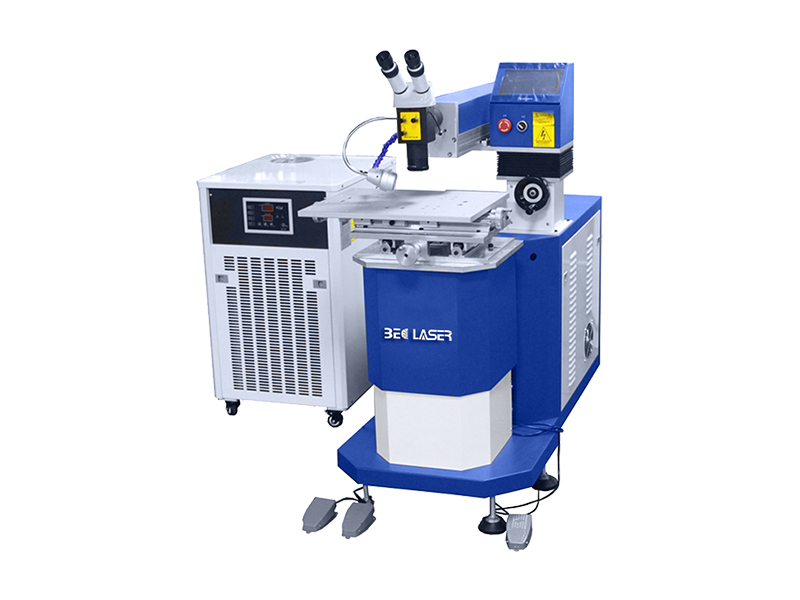
3.Cantilever laser welding machine-With lazy arm
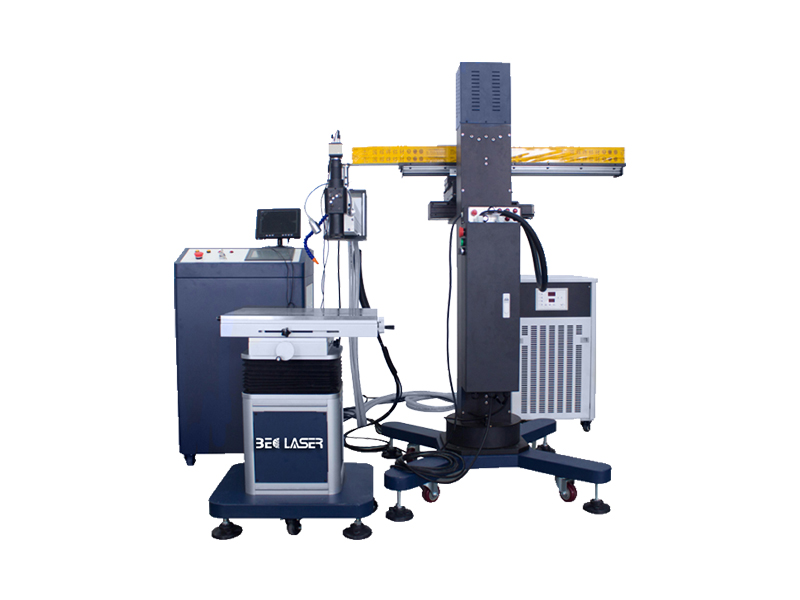
4.3-Axis laser welding machine-Automatic Type
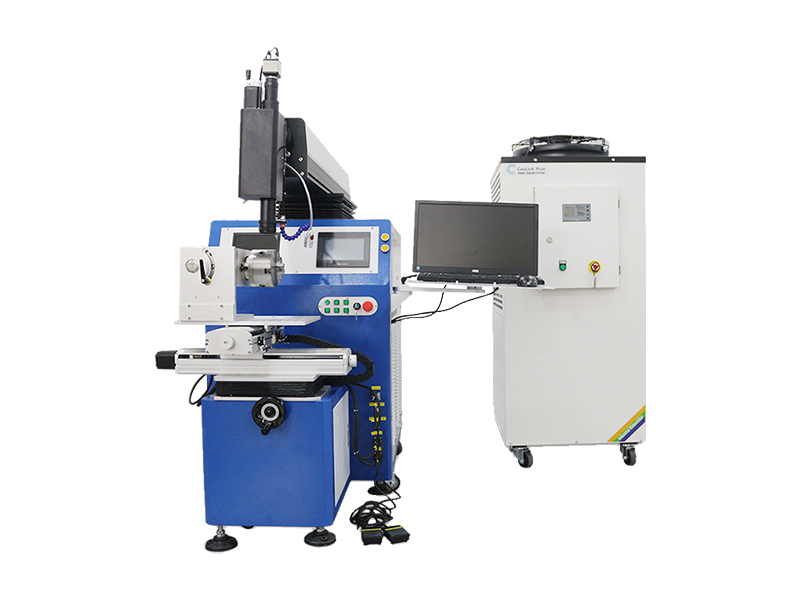
5.Jewelry laser welding machine-Desktop Type
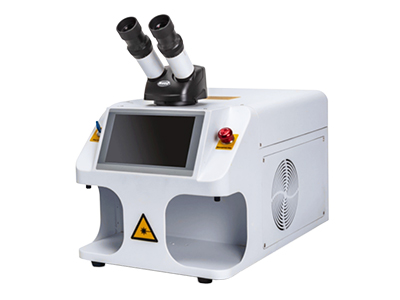
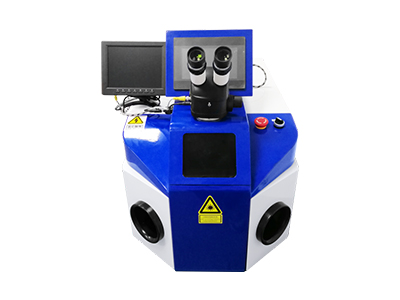
6.Jewelry laser welding machine–Inbuilt Water Chiller
7.Jewelry laser welding machine-Separate Water Chiller
Samples:
Post time: Apr-27-2023










